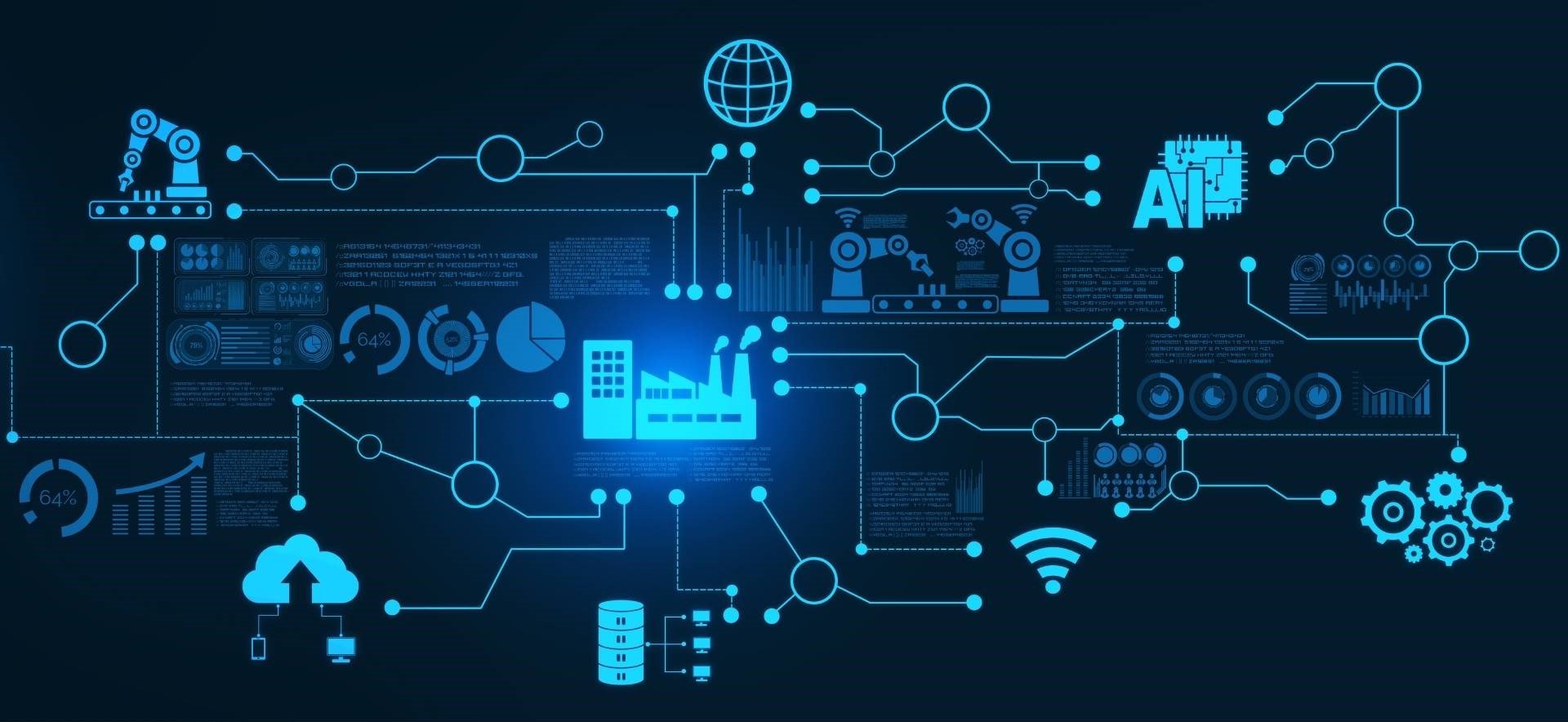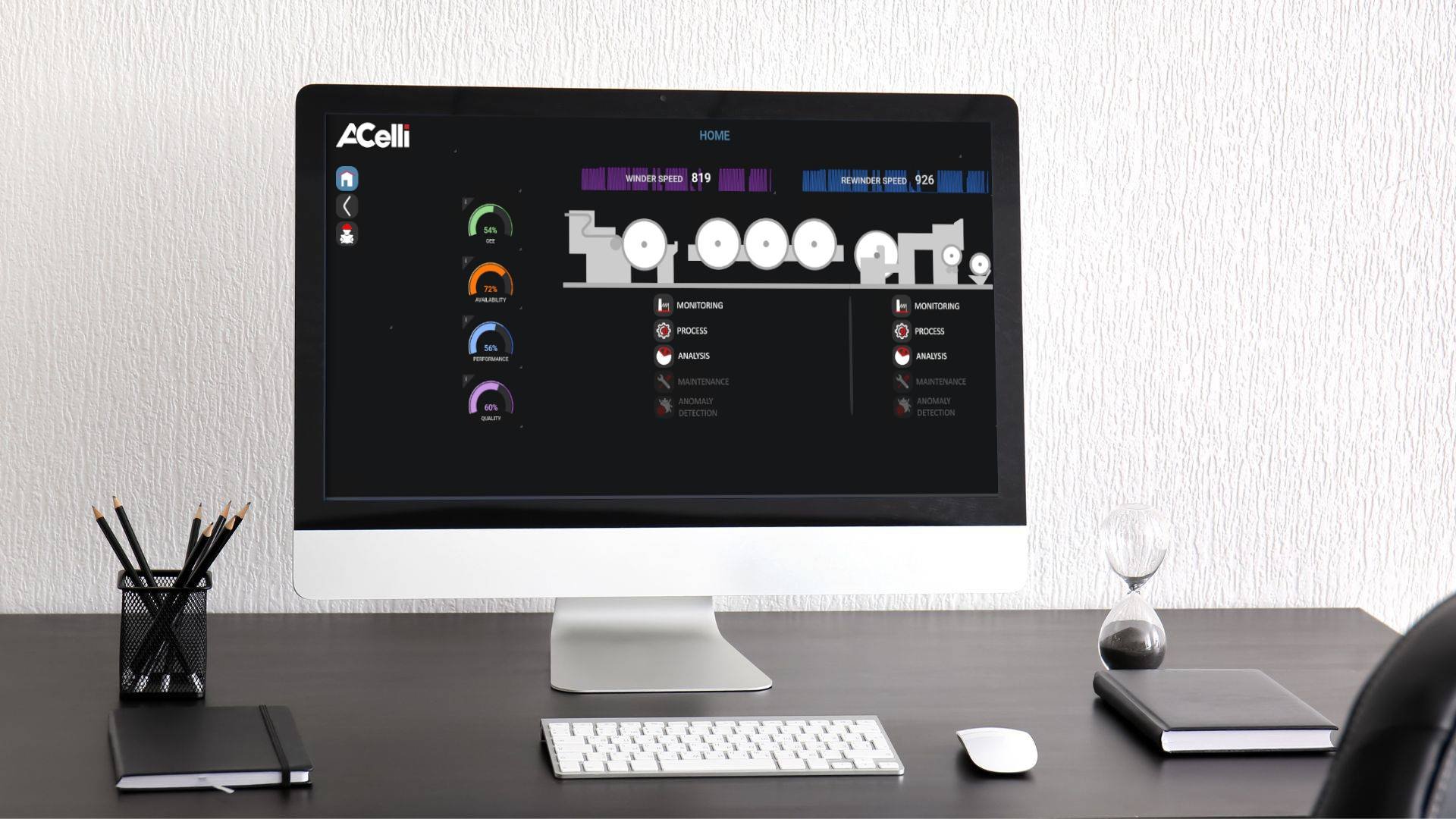In a period in which all industrial realities are subjected to increasing pressure to obtain better results using fewer resources and optimizing consumption, the technologies that are the basis of Industry 4.0 can be of great help in achieving the desired results. All this also applies to the nonwoven industry.
The term Industry 4.0 was born about ten years ago to indicate the last major change in industrial development: automation becomes increasingly digital and factories increasingly smart, thanks to solutions that use artificial intelligence (AI) and machine learning. The goal is to develop new and more efficient business models, increase productivity and product quality, reduce costs and machine downtime and make resource use more efficient.
Why use real-time monitoring
Current technology makes it possible to easily digitize all the machinery of a production line by equipping sensors and IoT devices capable of collecting, transmitting and sharing data related to their operation on the cloud.
These data, once historicized and analyzed, become usable in real time through interactive dashboards that allow unprecedented control over the industrial process, with the possibility of making corrective actions for its improvement.
Real-time monitoring of a production line makes it possible to promptly intervene in the event of anomalies that can reduce the yield of the line to the point of causing unexpected downtime, with consequent loss of time and degradation of production KPIs.
By monitoring the system, it is also possible to maximize the yield of energy consumption, intelligently allocating production according to the optimal energy profile and parceling out such consumption on the single product.
In the case of nonwoven production, the use of Industry 4.0 technologies acquires primary importance due to the extreme delicacy of the finished product and the process parameters that regulate its quality. the constant monitoring of these parameters allows the study of correlation phenomena imperceptible to the human eye and obtainable only through an accurate study of the product in the laboratory.
The possibility of having complete control of the process, on the other hand, makes it possible to statistically analyze all the variables involved, reducing non-conformities during production and improving time-to-market when launching new products.
The introduction in the company of an Industry 4.0 ecosystem, combined with the advantages of a cloud-based platform, allows us to easily integrate industrial data with data from the corporate infrastructure. This ensures a global vision of business processes and an improvement of both production ones, thanks to the data collected on the production line itself, and of those relating to the organization as a whole.
The scalability of the platform allows you to take advantage of the countless benefits guaranteed by the use of these technologies regardless of the size of the company, whether it is an SME or a multinational located on various continents, allowing a complete view of the production process without geographical limits.

7 benefits of real-time monitoring
Production optimization
If the behavior of the machinery should deviate from that expected (for performance, consumption or other) and therefore production was not proceeding optimally, the operator would observe the variation in the reference KPIs.
These KPIs can be mainly summarized in 3 categories: plant availability, production speed and quality of the finished product. A control of these three factors has an impact on Overall Equipment Effectiveness (OEE), an indicator that measures the total efficiency of a plant and is also a standard in nonwoven production.
In these cases, the monitoring of the OEE assumes particular importance as the yield of the single machine can have a significant impact on the whole plant: for this reason the management of KPIs and the implementation of corrective actions becomes a critical factor.
Another Industry 4.0 solution offered by A.Celli specifically for optimizing the operation of the rewinders is the so-called Smart Ramp-up, thanks to which it is possible to increase production and rewinding speeds without risking the onset of vibrational instability phenomena. By keeping the vibration level under control through data obtained from IoT sensors, production can thus increase from 3% to 5% without damaging the machine.
PLANNED AND PREDICTIVE MAINTENANCE
Machine components are obviously subject to wear. Considering the economic damage resulting from a long period of machine downtime due to the sudden breakdown of a machine, it is essential to take action to ensure that the possibility of this happening is remote.
Planned maintenance in relation to the nominal life cycle of each component is important, but only with IoT technologies is it possible to obtain more in-depth data to implement predictive maintenance activities and prevent even accidental failure.
By analyzing the data obtained from the sensors on the machinery with machine learning applications, it is possible to obtain a precise indication of the residual useful life of the components, especially those considered critical.
It will thus be possible to optimize the maintenance and replacement of components in the next scheduled machine downtime, guaranteeing optimal operation of the line and minimizing the risk of sudden breakages.
REMOTE MONITORING
A production plant adhering to the principles of Industry 4.0 and perfectly integrated into the corporate ecosystem allows remote monitoring of machinery without particular time and space constraints. Thanks to cloud computing services, the data on the machines can be collected and analyzed anywhere, regardless of the geographical location of the plant.
A single dashboard can offer real-time information, 24 hours a day, on the conditions of multiple plants in various parts of the world, allowing you to compare different scenarios and conditions and adopt company-wide best practices in real time.

REAL-TIME COST ALLOCATION
The possibility of easily having data coming from the machines of a line allows to carry out analysis which were unimaginable until recently.
By sharing production data in real time with company information systems, it will be possible to allocate production and management costs on the single meter of reel produced, allowing accurate and precise management control.
The use of complex artificial intelligence algorithms also allows to improve the efficiency of the production flow, accurately evaluating the best case scenario and adjusting the production volumes on the different lines according to the desired optimum.
REDUCTION of the environmental impact
The optimization obtained through the analysis of the detected data from the sensors allows the machines to be used in the best possible way, limiting energy waste along the entire production line. It is also possible to take advantage of the automatic adjustment of certain parameters in order to keep consumption always within predetermined limits.
Not only that: through specific applications it is possible to manage the so-called Smart Carbon Footprint, that is an indication of the emissions produced during the processing of raw materials and the production of paper, two phases of the Life Cycle Assessment (LCA) that are critical for the calculation of CO2 equivalent according to the GWP parameters expressed in the GHG protocol.
Continuous monitoring of energy parameters and emission measurements allow for precise information on the process in order to be able to intervene appropriately to reduce the environmental impact.
QUAlity control
The ability to manage data from the plant, combined with the use of proprietary algorithms, allows you to calculate and track critical parameters for the nonwoven in real time, such as the density and elongation of the material.
The real-time monitoring of these parameters, combined with the possibility of verifying historical trends, let you take immediate actions which, by changing the process settings, allow to preserve the quality of the material without wasting production hours.
Analysis of the process parameters during the development of new products
The data obtained from the sensors and IoT devices that are present on each machinery involved in the production can be suitably interpolated, allowing the creation of a "digital twin" of the product.
This digital twin, suitably linked to the management software data, allows for the precise classification of all production and its intrinsic characteristics. The management of this huge amount of data through artificial intelligence algorithms makes it possible to detect ideal profiles and evaluate the deviations in the tuning phase of the work recipe, going to predictively define whether the product has a high probability of complying with the customer requests or not.
Conclusions
For more information on how A.Celli solutions for Industry 4.0 can improve your production line, download now our free eBook “A.Celli end-of-line solutions for nonwovens production”!

